Microsoft BUILD: Windows 8, A Pre-Beta Preview
by Brian Klug & Ryan Smith on September 13, 2011 12:05 PM EST- Posted in
- BUILD
- Windows
- Microsoft
- Windows 8
- Trade Shows
The Technical Side Of Windows 8: Cont
Moving up the chain, Microsoft has added a number of base class drivers for hardware in Windows 8. This includes not only USB 3, but also class drivers for mobile broadband radios, sensors, and even printers. For printers this means Windows 8 can print to roughly 70% of all Windows 7 certified printers without an additional driver, which is nearly a necessity for Windows 8 as an ARM tablet OS, as drivers may not be available and tracking down a driver flies in the face of the modern pre-configured OS model for tablets.
For mobile broadband things are a bit more interesting. With this addition mobile broadband is being promoted to a first class connectivity option, right up there with Wi-Fi and Ethernet. Mobile broadband hardware can then be integrated into a laptop or a tablet or added via a dongle without requiring a driver or a complex dialer/manager application. Managers will still exist in a lesser form as a Metro application; Microsoft included one such example with the tablet we tested, which had a working AT&T 3G modem and its associated management application.

Windows 8 will also be aware of the limitations of mobile broadband connections, with an emphasis in usage caps. Given appropriate information by the ISP Windows 8 knows to halt background download processes (e.g. Windows Update, weather updates, RSS) to keep them from consuming valuable bits, and to notify the user if the device is approaching the cap and would be subject to overages. Along these lines Windows 8 also knows to switch to another source (i.e. Wi-Fi) when it’s available to avoid using up those metered bits.
We’ve mentioned permissions before when talking about the Windows Store, but it seems prudent to mention it again. For Metro applications Windows 8 will have a more fine grained permissions model than existing low/user/admin level privileges, by implementing Android style permissions. Metro applications will only be able to access the resources and data they were approved for, reducing the ability for a compromised application to be used as a launch pad for further attacks.
Our next stop on our look at the technical details for Windows 8 is the boot process. Microsoft put up an interesting blog last week discussing Windows 8’s new boot process, which was reiterated here – Windows 8 boots up much faster than Windows 7 thanks to the fact that only user processes are shut down, meanwhile the kernel is hibernated rather than shut down, shaving off a lot of time that would be needed to reload the kernel from a fresh boot. Realistically you need a motherboard with a very fast POSTing sequence, which means this is best paired with UEFI-based OEM boards. Certainly self-built systems will improve too, but we would not expect by as much.
The other new fact discussed about the Windows 8 boot process was that Microsoft is making another push to secure it through chain of trust hardware (presumably a TPM module), this time under the name Secure Boot. Utilizing the chain when available, if Windows 8 detects that a boot component has been modified it will fail the boot and kick over to the Windows Recovery Environment to restore the OS to a fixed state. With ARM devices (and even most PC tablets) the use of this feature will be a given, but obviously TPM hardware is much rarer on laptops and desktops.
Windows’ anti-malware features will also be making an appearance in the boot process. Windows Defender (which now includes Microsoft Security Essentials) now loads immediately after the critical boot components are loaded, allowing Defender to check everything that wasn’t protected by the Secure Boot process above.
Finally when it comes to booting, the last bastion of the CLI in the Windows boot process is gone. The F8 menu has been replaced with a GUI based Windows Recovery Environment. The WRE goes hand in hand with two other recovery features: Refresh and Reset.
Reset is a Windows-based implementation of OEM OS recovery partitions: when Reset is triggered, the entire system is overwritten by the restoration copy. As for Refresh it’s a bit more nebulous; it’s apparently a new implementation of Windows’ existing Last Known Good Configuration, allowing users to revert anything crapware may have done. But we don’t have the full details on its underpinnings at this time.

Last, but certainly not least we have the Task Manager. Other than a couple of minor changes with Windows Vista the Task Manager has remained nearly unchanged for years, so of course Microsoft has gone ahead and overhauled it. By default the new Task Manager is extremely simplified and only lists running user applications, thereby ensuring users only close applications and not background processes and such by mistake.
In detailed most the Task Manager takes on a more traditional appearance, giving you greater details about all of the running processes (including breaking them down by application or background process), but also a number of new performance metrics (largely taken from Windows 7’s performance monitor), and even an over-time breakdown of the resource usage of all of the system’s installed Metro applications. Interestingly the Task Manager itself is not strictly Metro, but rather a desktop application that doesn’t require the desktop environment to be loaded.


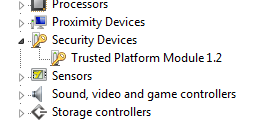
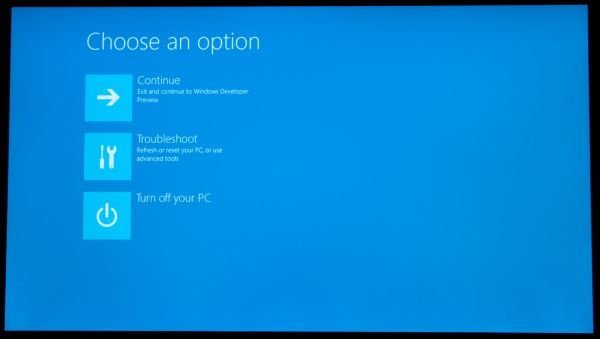
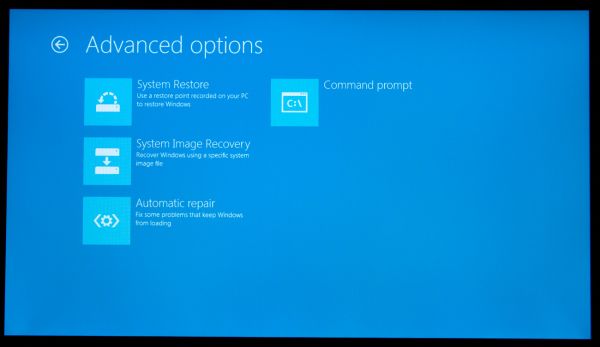
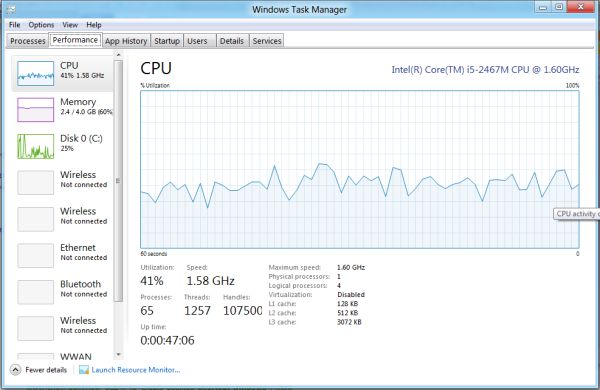
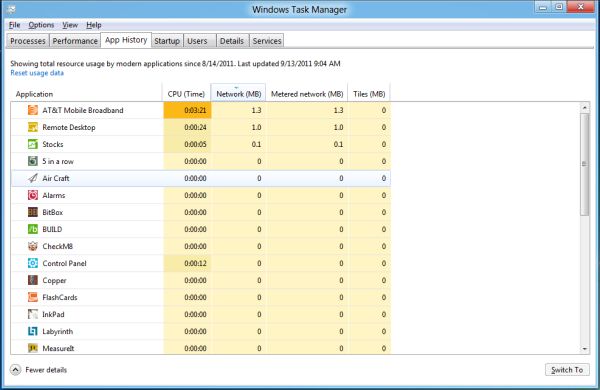








235 Comments
View All Comments
A5 - Tuesday, September 13, 2011 - link
If you think the only difference between Win95 and Win7 is the UI and "convenience functionality" (and I love how make this sound like a bad thing), then you are sorely mistaken.Exodite - Wednesday, September 14, 2011 - link
For the end user there's no discernible differences aside from those noted.Sure, we've gotten higher versions of APIs such as DirectX or whatever but in the end that matters very little.
UMADBRO - Tuesday, September 13, 2011 - link
Have fun with that. Let us all know what happens when you try and even get that outdated, abandoned POS online, much less being able to do anything even remotely useful, other then playing old, shitty games.Exodite - Wednesday, September 14, 2011 - link
I used my '92 Amiga as my primary computer until '04, at which point I built my first Wintel machine - mainly due to gaming.The Amiga still works, were connected to the Internet with a 10Mbit PCMCIA Ethernet adapter, had an excellent browser for the time, and still offers a better desktop experience than any version of Windows.
I realize most people familiar with the platform only ever used A500's with Kickstart 1.2 or 1.3 and never actually saw the OS due to using it as gaming console. That's unfortunate, as AmigaOS 3.x remains unmatched in performance, simplicity, power and convenience when put up against any modern desktop OS.
UMADBRO - Wednesday, September 14, 2011 - link
That must have been interesting. Ill admit, I also use older stuff for specific things, like my old P4 box running Win98SE for DOS and older Windows games. But I also realize that its usefulness is limited, at best. Eventually we all need to move on. Anyway, sorry for the hostility. The overall tone in these messages when I was reading last night just annoyed me to no end. The majority of people have made up their mind before even trying things out. I cant stand close minded people like that.Exodite - Wednesday, September 14, 2011 - link
No offense taken, I do see your point.For me personally I suppose the disappointment is two-fold;
The distinct lack of technical innovation, which I consider current iterations of Windows to be in desperate need of, and the hodge-podge UI design.
The latter will hopefully improve until release at least.
I'm personally not a fan of metro in any way, though for WP7 devices I have no problem acknowledging that it's a very functional design with it's own distinctive style.
Unfortunately I can't see an upside to its introduction on the desktop. Someone likened it to a 'consoleization' of the desktop and I can only think about how how apt that statement is.
Still, final judgment must be reserved for the release version.
Booster - Tuesday, September 13, 2011 - link
Looks like another 9 years on Windows 7 to me. There's no way I'm ever installing this crap.Booster - Tuesday, September 13, 2011 - link
I mean, how can you even multitask on this ridiculous garbage? I normally have like 10 browser windows open, 4-5 word and excel docs, plus a handful of Explorer windows. And I need to switch between all this really fast, copy and paste and so on. What am I supposed to do with this?!dagamer34 - Tuesday, September 13, 2011 - link
Stick to the normal desktop?ph0tek - Wednesday, September 14, 2011 - link
LOL. Exactly. Some of these people commenting are so thick i's truly amazing.